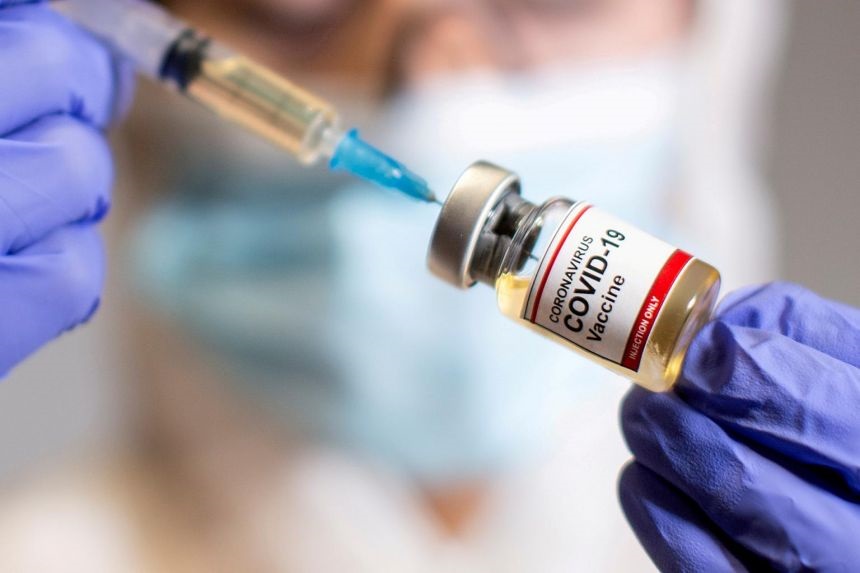The growing threat of smokeless tobacco: Health risks and rising usage

Data reveals that 14.5 per cent of secondary school students and 6.0 per cent of primary school pupils in Kenya have used tobacco at some point in their lives.
The growing desire for a quick and affordable rush has led many young people to turn to smokeless tobacco. This trend is largely fuelled by the misconception that smokeless tobacco is less harmful than traditional cigarettes. But in reality, smokeless tobacco poses even greater health risks.
Shadrack Mwangi, a boda boda rider in Nairobi, has been using tobacco for several months in search of something that gives him a quick head rush while still allowing him to perform his demanding job. His preferred method of consumption is sniffing tobacco.
More To Read
- Four-country study finds worrying issues with cancer drug quality in Africa
- Study finds Covid-19 mRNA vaccines may boost cancer immunotherapy
- From NHIF to SHA: Kenya's cancer patients pay the price for a broken health system
- Kisumu mother of five beats deadly oesophageal cancer in historic Jaramogi Hospital surgery
- UK warns citizens visiting Kenya, Uganda of methanol poisoning from fake alcoholic drinks
- Up to 1 in 5 lung cancer patients non-smokers: study
"I've been using mbake (tobacco snuff) for many years, and I’ve never experienced any issues, aside from the discoloration of my teeth," he says.
He feels a sense of well-being when he sniffs his tobacco, and when he’s high, he’s in a good mood, unlike when he hasn't used it.
"Until I take it, I don't feel right. I'm very irritable, and I can't do much, but once I take a simple sniff, my world opens up, and I'm active again," he explains.
Shadrack admits he got hooked on tobacco when trying to fit in. He didn’t want to drink alcohol but still wanted to experience a similar "high". A friend recommended it to him, and since it worked for his friend, he decided to try it. He’s unaware of the health risks, believing that smokeless tobacco is less harmful than cigarettes, which he associates with lung damage.
He mentions that the tobacco is sold to them by local vendors, who wrap it in small transparent wrappers. It costs Sh20 and can last anywhere from three to five days, depending on how often someone uses it. However, Shadrack uses his as many times as possible throughout the day.
Readily available
The National Agency for the Campaign Against Drug Abuse (NACADA) says that a key challenge in tackling tobacco use is that smokeless tobacco products are low-cost, widely available, and accessible even to minors. Additionally, these products fail to meet regulatory standards.
Tyson Omollo noticed a growing demand for tobacco sniffing among his peers, which led him to start a business that has brought in substantial profits. By positioning himself in areas with large numbers of young people, he can sell his stock directly. As a user himself, he finds the addiction hard to break.
"I started selling tobacco after noticing how dependent people were on it, but over time, I got tempted to try it myself," he says.
He recalls that the initial stages were tough, with constant headaches, loss of appetite, and overeating. However, his body eventually adjusted, and now he enjoys the rush it provides.
"Since it’s cheap, many people can afford it, ensuring a steady flow of customers. Even those who can’t afford it share because you don’t need much to get high, making it cost-effective."
Tyson says some of the tobacco they sell is imported from neighbouring countries as these products are preferred due to their stronger effects compared to locally available brands.
"When you use it for a while, you start craving something stronger, which is why the demand for these imported ones is high. We have to keep searching among fellow vendors to find the best and strongest options because that’s what people want."
Extremely dangerous
Ummy Noor, a health practitioner in Eastleigh, emphasises that smokeless tobacco is extremely dangerous and can lead to numerous health complications, including oral cancer.
"Those who chew or sniff tobacco over time develop weakened immune systems, making them more susceptible to diseases like the flu. This also increases their risk of infections on the gums and throat, which can eventually transform into oral cancer."
Cancer caused by smokeless tobacco often starts as leucoplakia — white or grey patches in the mouth or throat — which can later progress into cancer.
Nicotine addiction from smokeless tobacco also leads to gum disease, tooth decay, and tooth loss. It can cause heart disease, worn-down and stained teeth, and receding gums.
"Many people who place tobacco under their lips experience very weak gums and frequent respiratory issues, which contribute to other infections that can spread to the ears and even other parts of the body," she explains.
She also notes that tobacco users often experience erratic eating habits, swinging from overeating to a lack of appetite, both of which negatively affect their health.
Ummy advocates for abstinence from these substances, as their long-term health impacts are far more damaging.
Smokeless tobacco products come in several forms, including:
Snuff – Finely ground tobacco that can be inhaled (sniffed) or placed between the cheek and gum.
Chewing tobacco – A type of tobacco that is chewed and kept between the cheek and gum, releasing nicotine as it is chewed.
Dip – A form of moist snuff that is placed between the lower lip and gum.
Dissolvable tobacco – Tobacco products that dissolve in the mouth, such as strips, sticks, or orbs.
Snus – A moist, finely ground tobacco product, usually packaged in small pouches and placed under the upper lip.
According to the 2022 NACADA report, one in every 12 Kenyans aged 15–65 years (2,305,929 individuals) currently uses tobacco.
Among males, one in every 6 (2,018,655) uses tobacco, while among females, it is one in every 50 (287,274).
The Central region has the highest prevalence of tobacco use (11.9 per cent), followed by Coast (10.8 per cent) and Eastern (10.7 per cent).
Reports show that snuff, tamboo, ndovu, nicotine pouches, and kamath spit tobacco are the most commonly used smokeless tobacco products in Kenya.
Data reveals that 14.5 per cent of secondary school students and 6.0 per cent of primary school pupils in Kenya have used tobacco at some point in their lives, indicating a significant problem with tobacco use, especially among the youth. This presents challenges in enforcing effective control over smokeless tobacco products.
The Tobacco Control Act, 2007, serves as the legal framework, outlining regulations for the labelling, packaging, sale, distribution, and promotion of tobacco products. However, the way these products are peddled makes it challenging to enforce these regulations effectively.
Cancer-causing chemicals
The Centres for Disease Control (CDC) says that smokeless tobacco causes cancer in the mouth, oesophagus, and pancreas.
Many smokeless tobacco products contain cancer-causing chemicals, with tobacco-specific nitrosamines being the most harmful. These organic compounds increase the risk of cancer and form during the growing, curing, fermenting, and ageing of tobacco. The amount of these chemicals present varies by product, and the higher the concentration, the greater the cancer risk. Other cancer-causing substances found in tobacco include:
Polonium-210, a radioactive element from fertilisers used to grow tobacco, which is absorbed by the plant.
Polynuclear aromatic hydrocarbons (also known as polycyclic aromatic hydrocarbons), chemicals formed when tobacco is cured with heat.
Harmful metals, including arsenic, beryllium, cadmium, chromium, cobalt, lead, nickel, and mercury.
Smokeless tobacco, such as chewing tobacco and snuff, is often perceived as a safer alternative to smoking, but it can be even more dangerous for several reasons:
- Cancer risk
Smokeless tobacco contains carcinogens (cancer-causing substances) like tobacco-specific nitrosamines (TSNAs). These chemicals are absorbed directly into the body when the tobacco is placed in the mouth, leading to a much higher concentration of these harmful substances in the mouth, throat, and digestive system. This increases the risk of cancers in the oral cavity, throat, pancreas, and oesophagus.
- Addiction
Smokeless tobacco contains nicotine, which is highly addictive. Nicotine is absorbed through the mouth’s tissues, leading to quick delivery of the drug into the bloodstream. This causes a strong addiction, similar to smoking, making it hard for users to quit and leading to long-term health problems.
- Gum disease and tooth loss
Using smokeless tobacco can cause severe oral health issues, including gum recession, gum disease, and tooth decay. The tobacco irritates the gums, leading to the breakdown of gum tissue and supporting bone structures, which can result in tooth loss over time. The chemicals in smokeless tobacco also stain teeth and lead to bad breath.
- Heart disease
Smokeless tobacco raises blood pressure and heart rate, which can increase the risk of heart disease and stroke. The nicotine constricts blood vessels, which can lead to increased blood pressure and contribute to heart-related problems.
- Mouth sores and leukoplakia
The irritants in smokeless tobacco can cause sores inside the mouth and leukoplakia, which are white patches that can form on the gums, tongue, and inner cheeks. Leukoplakia is considered a precancerous condition, and untreated sores can develop into mouth cancer.
- Increased risk of other diseases
In addition to oral cancers, smokeless tobacco users have a higher likelihood of developing other health issues, such as diabetes, respiratory problems, and stomach ulcers due to the long-term effects of the toxic chemicals in the tobacco.
In summary, smokeless tobacco is dangerous because it delivers nicotine and harmful chemicals directly to the body, leading to an increased risk of addiction, cancer, heart disease, and serious oral health problems.
The World Health Organisation (WHO) reports that globally, there are 1.25 billion adult tobacco users, and more than 8 million people die from tobacco use each year. Most of these tobacco-related deaths occur in low- and middle-income countries, which are frequently targeted by aggressive tobacco industry marketing and interference.
The Lancet adds that there are over 300 million smokeless tobacco users worldwide.
Tobacco use is not only harmful to smokers but also to non-smokers.
Second-hand smoke exposure contributes to adverse health outcomes, causing 1.2 million deaths annually.
Nearly half of all children are exposed to tobacco smoke, and as a result, 65,000 children die each year from illnesses related to second-hand smoke.
Top Stories Today













































